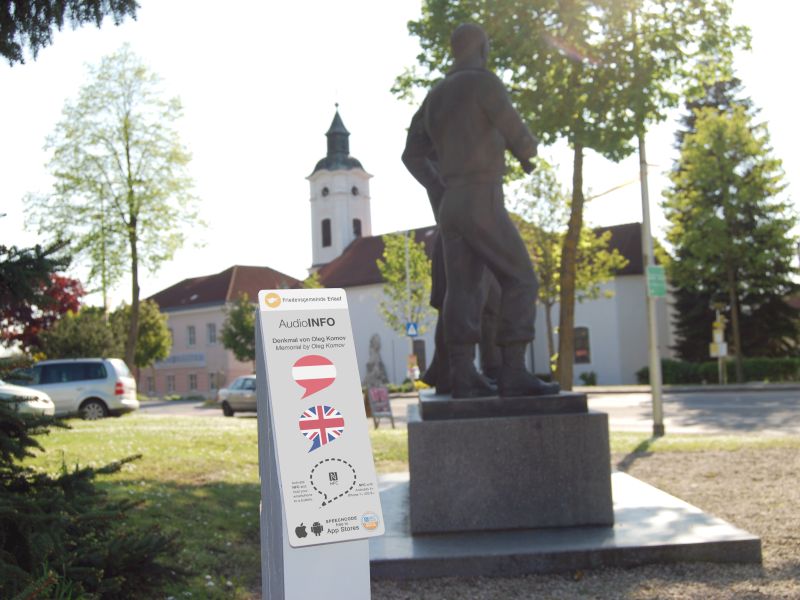Cultural mediation in public spaces is a special challenge in itself.
And the now increasingly expressed demand for a more critical approach to cultural objects does not make things any easier.
In public space, we encounter culture at every turn:
Buildings, bridges, parks, and of course monuments and murals of all kinds.
So any cultural mediation in public spaces needs to be accessible 24/7, free of charge, and low-threshold. And it needs a medium that is robust, durable and cost-effective.
For this reason, cultural education in public spaces is usually carried out by means of boards or signs.
However, there is naturally only room for very little information on them.
And for people with visual impairments or reading difficulties, not even this information is accessible.
In addition to accessibility and inclusion, a cultural issue is also attracting more and more attention:
How should we deal with cultural objects in public spaces that are dedicated to people or events that are now considered condemnable and criminal?
After all, there are plenty of monuments and street names in public spaces for cruel despots, slave traders, war criminals and anti-Semites.
Mostly without any reference to their “dark” sides.
But often the works themselves are artistically valuable and historically significant. So removing such objects would rarely be a good solution.
It is much more important to provide a critical examination of the person depicted and the historical context.
In other words, a kind of cultural mediation that goes far beyond simply stating a few key dates!
Regardless of an artistic mediation, additional explanations and comprehensive information make absolute sense. Moreover, cultural mediation in public spaces is even more important than in curated and accompanied activities.
So how can you offer detailed information in a small space, inexpensively, weatherproof, maintenance-free, low-threshold and accessible? Digital, of course. But without a network infrastructure?
Attach a small NFC Speech Tag to the existing sign that contains all the necessary information about the art object.
Interested parties retrieve the content with their smartphone via the SpeechCode app. The text shows on the display and is read aloud at the same time.
Without internet, this works anytime and anywhere, guaranteed free of charge, without data privacy risk and completely barrier-free! Read more

With up to 6 pages, an NFC Tag by SpeechCode offers enough space for comprehensive cultural mediation in public spaces!
Find out how SpeechCode works: 5 steps to your personal SpeechCode - try it now!
read moreFor many cultural institutions audio guides are simply too expensive. Find out about affordable solutions
read moreVoice assistants are becoming increasingly popular. So it makes sense to use them for history interpretation:
read morePossibilities and innovative tools for "mass" nature education:
read moreWhy Storytelling with Voice Assistants is a perfect combination
read moreFind out, why voice assistants can improve the reach of your messages and the comfort of the recipients.
read moreHow to reach people with reading difficulties:
read moreFour examples of accessible nature parks and smart solutions
read morePros & Cons of Braille, tactile lettering and Audio Format
read moreRead here, how fast Interent really is and how long it will take
read more